 |
Foodoric and associated companies are chemicals manufacturing companies operated in India USA UAE Europe Asia and other countries around the world. The associates have one or more of certifications like ISO-9001, ISO-14001, ISO-22000:2005, FSSC 22000; OHSAS 18001; Kosher and Halal Certified; HACCP, FSSAI and FDA - GMP approval. Buyers are assured of good quality and CIF wholesale and retail price for supplies of our Calcium Chloride. |
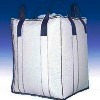
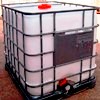
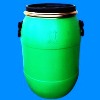
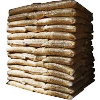
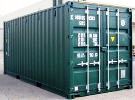
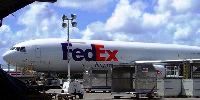
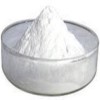
CAS Number 10035-04-8 & 10043-52-4, Calcium Chloride Hexahydrate Dihydrate Anhydrous Fused Lumps Pellets Solution IP BP USP FCC Food Grade ACS Reagent Manufacturers Suppliers
Calcium Chloride
Hexahydrate Dihydrate Anhydrous Fused Lumps Pellets Solution IP BP USP FCC Food Grade ACS Reagent

| Particulars | Calcium Chloride Dihydrate |
| Assay | 97 to 103% as CaCl2.2H2O Di-hydrate |
| Arsenic | 0.0003% max. <3 ppm |
| Lead (Pb) | 0.001% max. <10 ppm. |
| Heavy Metal as (Pb) | 0.0003% max. <3 ppm. |
| Magnesium | 0.05% max. |
| Clarity of 10% Solution. | Clear & Colorless |
| Free Acid or Alkali | 0.005% max. & pH 4.5-9 0.2ml of 0.01M HCl/NaOH to 10ml of 10% |
| Particulars | Calcium Chloride Anhydrous Lumps & Prills |
| Assay | 93% min. CaCl2 Calcium Chloride Anhydrous |
| Arsenic | 0.0003% max. 3 ppm. max. |
| Lead (Pb) | 0.001% max. 10 ppm. max. |
| Heavy Metal as (Pb) | 0.0003% max. 3 ppm. max. |
| Magnesium/Alkali | 1% max |
| Clarity of 10% Solution. | Clear & Colorless |
| Free Acid or Alkali | 0.005% max. & pH 4.5-9 0.2ml of 0.01M HCl/NaOH to 10ml of 10% |
Calcium Chloride FCC Food Grade Specifications
CaCl2 Formula weight, anhydrous 110.98
CaCl2·2H2O Formula weight, dihydrate 147.01
DESCRIPTION
Calcium Chloride occurs as white, hard fragments, granules, or powder. It is anhydrous or contains two molecules of water of hydration. It is deliquescent. It is soluble in water and slightly soluble in alcohol. The pH of a 1:20 aqueous solution is between 4.5 and 11.0.
Function Firming agent.
REQUIREMENTS
Labeling: Indicate whether it is anhydrous or the dihydrate.
Identification: A 1:10 aqueous solution gives positive tests for Calcium and for Chloride.
Assay: Anhydrous: Not less than 93.0% and not more than 100.5% of CaCl2; Dihydrate: Not less than 99.0% and not more than 107.0% of CaCl2·2H2O.
Acid-Insoluble Matter Anhydrous: Not more than 0.02%; no particles per kilogram of sample greater than 2 mm in any dimension.
Arsenic: Not more than 3 mg/kg.
Fluoride: Not more than 0.004%.
Lead: Not more than 5 mg/kg.
Magnesium and Alkali Salts Anhydrous: Not more than 5.0%; Dihydrate: Not more than 4.0%.
Calcium Chloride USP
Calcium Chloride, Dihydrate. USP
CaCl2·2H2O 147.01
Assay: Calcium Chloride contains an amount of CaCl2 equivalent to not less than 99.0 percent and not more than 107.0 percent of CaCl2·2H2O.
Packaging and storage: Preserve in tight containers.
Labeling: Where Calcium Chloride is intended for use in hem dialysis, it is so labeled.
Identification: A solution (1 in 10) responds to the tests for Calcium and for Chloride.
pH: between 4.5 and 9.2, in a solution (1 in 20).
Aluminum (where it is labeled as intended for use in hem dialysis): the limit is 1 4g per g.
Iron, aluminum, and phosphate: To a solution (1 in 20) add 2 drops of 3 N hydrochloric acid and 1 drop of phenolphthalein TS. Then add ammonium chloride–ammonium hydroxide TS, drop wise, until the solution is faintly pink, add 2 drops in excess, and heat the liquid to boiling: no turbidity or precipitate is produced.
Heavy metals: the limit is 0.001%.
Limit of magnesium and alkali salts: Dissolve 1 g in about 50 mL of water, add 500 mg of ammonium chloride, and proceed as directed in the test for Limit of magnesium and alkali salts under Calcium Carbonate, beginning with “heat the solution, and boil for 1 minute”: the weight of the residue does not exceed 5 mg (1.0%).
Organic volatile impurities meets the requirements.
Calcium Chloride BP Ph Eur Dihydrate Specifications
CaCl2,2H2O
DEFINITION
Content: 97.0 per cent to 103.0 per cent of CaCl2,2H2O.
CHARACTERS
Appearance: White or almost white, crystalline powder, hygroscopic.
Solubility : Freely soluble in water, soluble in ethanol (96 per cent).
IDENTIFICATION
Solution S (see Tests) gives reaction of chlorides.
It gives the reactions of calcium.
It complies with the limits of the assay.
TESTS
Solution S: Dissolve 10.0 g in carbon dioxide-free water prepared from distilled water and dilute to 100 ml with the same solvent.
Appearance of solution: Solution S is clear and not more intensely colored than reference solution.
Acidity or alkalinity: To 10 ml of freshly prepared solution S add 0.1 ml of phenolphthalein solution. If the solution is red, not more than 0.2 ml of 0.01 M hydrochloric acid is required to discharge the color and if the solution is colorless, not more than 0.2 ml of 0.01 M sodium hydroxide is required to turn it red.
Sulphates: Maximum 300 ppm.
Aluminium: To 10 ml of solution S add 2 ml of ammonium chloride solution R and 1 ml of dilute ammonia and boil the solution. No turbidity or precipitate is formed.
If intended for use in the manufacture of dialysis solutions, the above test is replaced by the test for Aluminium maximum 1 ppm.
Barium: To 10 ml of solution S add 1 ml of calcium Sulphate solution R. After at least 15 min, any opalescence in the solution is not more intense than that in a mixture of 1 ml of distilled water and 10 ml of solution S.
Iron: Maximum 10 ppm, determined on solution S.
Magnesium and alkali metals: Maximum 0.5 per cent.
Heavy metals: Maximum 20 ppm.
Calcium Chloride Hexahydrate BP Specifications
CaCl2,6H2O
DEFINITION
Content: 97.0 per cent to 103.0 per cent of CaCl2,6H2O.
CHARACTERS
Appearance: White or almost white, crystalline mass or colorless crystals.
Solubility: Very soluble in water, freely soluble in ethanol (96 per cent).
It solidifies at about 29C.
IDENTIFICATION
Solution S (see Tests) gives reaction of chlorides.
It gives the reactions of calcium.
It complies with the limits of the assay.
TESTS
Solution S: Dissolve 15.0 g in carbon dioxide-free water prepared from distilled water R and dilute to 100 ml with the same solvent.
Appearance of solution: Solution S is clear and not more intensely colored than reference solution.
Acidity or alkalinity: To 10 ml of freshly prepared solution S add 0.1 ml of phenolphthalein solution. If the solution is red, not more than 0.2 ml of 0.01 M hydrochloric acid is required to discharge the color and if the solution is colorless, not more than 0.2 ml of 0.01 M sodium hydroxide is required to turn it red.
Sulphates: Maximum 200 ppm.
Aluminium: To 10 ml of solution S add 2 ml of ammonium chloride solution R and 1 ml of dilute ammonia R1 . Heat to boiling. No turbidity or precipitate is formed. If intended for use in the manufacture of dialysis solutions, the above test is replaced by the test for Aluminium : maximum 1 ppm.
Barium: To 10 ml of solution S add 1 ml of calcium Sulphate solution. After at least 15 min, any opalescence in the solution is not more intense than that in a mixture of 1 ml of distilled water and 10 ml of solution S.
Iron: Maximum 7 ppm, determined on solution S.
Magnesium and alkali metals: Maximum 0.3 per cent.
Heavy metals Maximum 15 ppm.
Calcium Chloride Solution FCC Food Grade
DESCRIPTION
Calcium Chloride Solution occurs as a clear to slightly turbid, colorless or slightly colored liquid at room temperature. It is normally available in a concentration range of about 35% to 45% of CaCl2.
Function: Sequestrant; firming agent.
REQUIREMENTS
Identification: When diluted to a concentration of about 1:10 (CaCl2 basis), a sample gives positive tests for Calcium and for Chloride.
Assay: Not less than 90.0% and not more than 110.0%, by weight, of the labeled amount of calcium chloride, expressed as CaCl2.
Alkalinity [as Ca(OH)2]: Not more than 0.3%.
Fluoride: Not more than 0.004%, calculated on the amount of CaCl2 as determined in the Assay.
Lead: Not more than 4 mg/kg, calculated on the amount of CaCl2 as determined in the Assay.
Magnesium and Alkali Salts: Not more than 5.0%, calculated on the amount of Calcium Chloride as determined in the Assay.
Calcium Chloride Dihydrate ACS Reagent
CaCl2 . 2H2O
Formula Weight 147.01
CAS Number 10035-04-8
REQUIREMENTS
Assay: 99.0-105.0% CaCl2 - 2H2O
pH of a 5% solution: 4.5-8.5 at 25C
MAXIMUM ALLOWABLE
Insoluble matter: 0.01%
Oxidizing substances (as NO3): 0.003%
Sulfate (SO4): 0.01%
Ammonium (NH4): 0.005%
Barium (Ba): 0.005%
Heavy metals (as Pb): 5 ppm
Iron (Fe): 0.001%
Magnesium (Mg): 0.005%
Potassium (K): 0.01%
Sodium (Na): 0.02%
Strontium (Sr): 0.1%
Calcium Chloride Desiccant
CaCl2
Formula Weight 110.98
CAS Number 10043-52-4
REQUIREMENTS
Assay: 96.0% CaCl2
MAXIMUM ALLOWABLE
Titrable base: 0.006 meq/g.

Calcium Chloride Hexahydrate Dihydrate Anhydrous Fused Lumps Pellets Solution IP BP USP FCC Food Grade ACS Reagent Manufacturers Suppliers:
Foodoric Group of Cos
India, USA, UAE, Europe
e-mail: info@foodoric.com

Copyright
Last
14 March, 2022
Calcium Chloride Hexahydrate Dihydrate Anhydrous Fused Lumps Pellets Solution IP BP USP FCC Food Grade ACS Reagent Suppliers, Exporters, Importers, Manufacturers offering good CIF wholesale and retail prices, quality and online information.
A jackal woke up early in the morning and went in to the plains. He looked at his long shadow in the rising morning sun and said to himself, "I must have a camel for my meal today".
He kept moving around till noon and it was getting hot and the jackal was tired. He was also hungry and thirsty. He looked at his small shadow in the mid-day sun. He murmered, "I was only joking about the camel, a mouse will do".